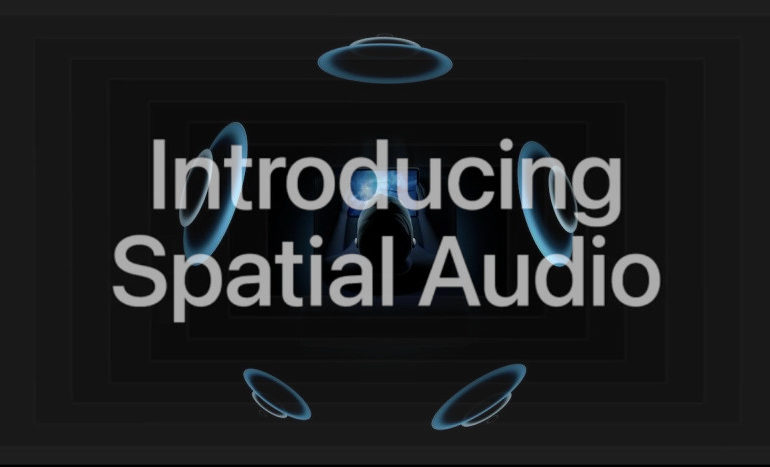What is Apple’s Spatial Audio?
Recently Apple announced Spatial Audio inclusion for not just movies, but music. We’ve seen Spatial Audio before from the likes of THX, Dolby, DTS, and others. But Apple’s implementation of Spatial Audio is a little different. How? Let’s explore.
First, What is Spatial Audio?
Spatial Audio is essentially 3D audio. This is when the content isn’t just mixed into two, stereo speakers, but mixed in a 3D environment. We’ve had surround sound for many years, and recently Dolby, DTS, and Auro have introduced height channels that put the sounds not just around us, but above. Spatial Audio does that but with just two headphones. Again, this is nothing new. There have been (and continue to be) many formats out there that either upmix or directly decode content so that it is placed not just in front of the listener, but all around through headphones. Apple’s Spatial Audio is a bit different though.
Anchoring Sounds
Unlike other 3D sound solutions for headphones, Apple’s Spatial Audio can anchor a sound within a room. That means that if you are watching a movie on a screen, the voices can be anchored at the screen. In most 3D sound solutions, the voices are anchored in front of the listener. If you turn your head, the voices would still come from in front of your face even if you are no longer facing the screen.
Not so with Apple’s Spatial Audio. They can anchor the sound at the screen so that even if you turn your head, the voices will still sound like they are coming from the screen location. Obviously, with music with no video, this isn’t necessary. But it is a very neat solution that has one, glaring drawback.
Only Works with AirPods
You will not be able to use any headphones you want with Apple’s Spatial Audio. Instead, it is limited to AirPods and AirPod Pro earphones. The reason is gyroscopes. To get the Spatial Audio to anchor sounds in a room, Apple has to know when you turn your head. Most (just about all) headphones don’t have gyroscopes. The AirPods do. This allows Apple to track your head movement so that it knows which direction you are facing.
What You Need To Make This Work
Obviously, you need a pair of AirPods to start. You need to have updated to at least iOS and iPadOS version 14.6. The full list of compatible devices is:
- iPhone 7 or later
- iPad Pro 11‑inch
- iPad Pro 12.9‑inch (3rd generation and later)
- iPad Air (3rd generation and later)
- iPad (6th generation and later)
- iPad mini (5th generation)
- Apple TV (Music only)
- Apple TV 4K (2021)
- MacBook Pro (2018 model and later)
- M1 MacBook Air (2020)
- M1 MacBook Pro (2020)
- M1 iMac (2021)
- M1 Mac Mini (2020)
Apple’s Spatial Audio works best when it is paired with Dolby Atmos. Dolby Atmos is only available on Apple devices that were released in 2018 or later. If your device is older than that but still has access to Apple’s Spatial Audio, it will still work.
Compatible Apps
You can use Spatial Audio on any app that has surround sound enabled. This includes most of the streaming apps. Even if the app doesn’t support surround sound, it can be upmixed to Spatial Audio if the app allows upmixing. Currently, Netflix is the only major streaming service that isn’t streaming in surround to iOS devices and hasn’t allowed upmixing. We expect that will change sooner rather than later.
Have you tried Apple’s Spatial Audio? How does it sound to you? Give us your thoughts in the comments!


